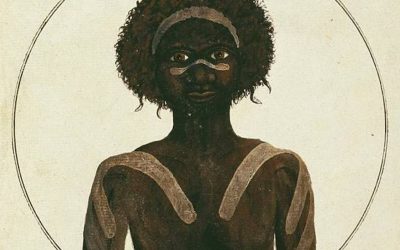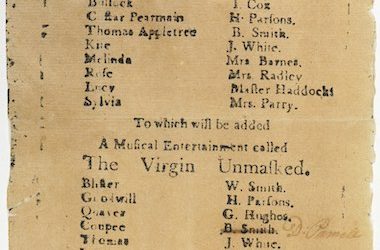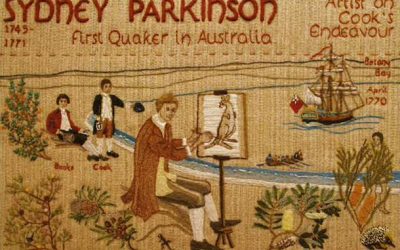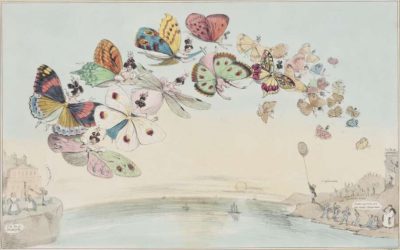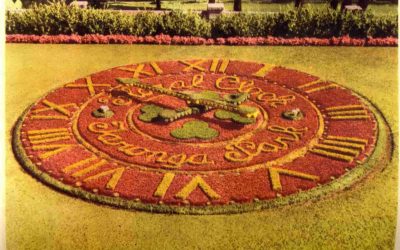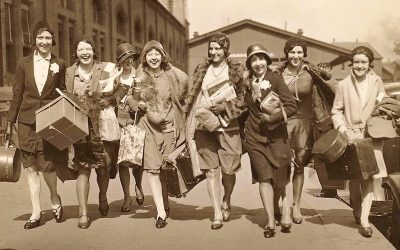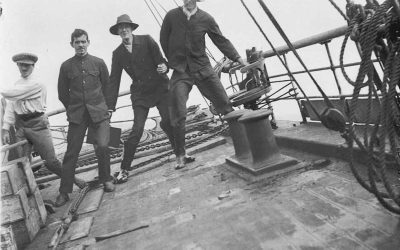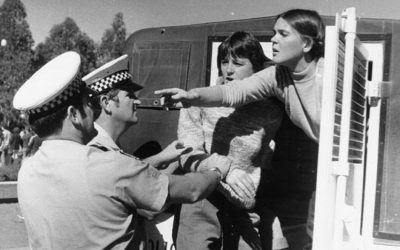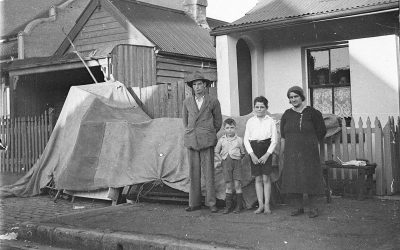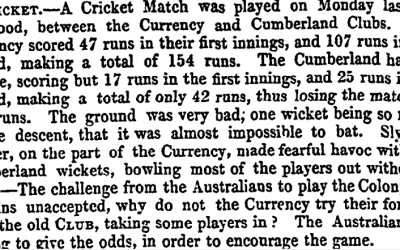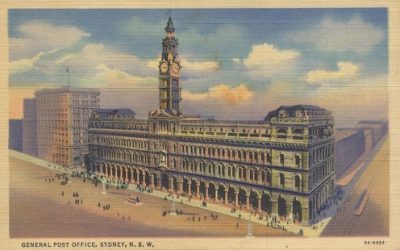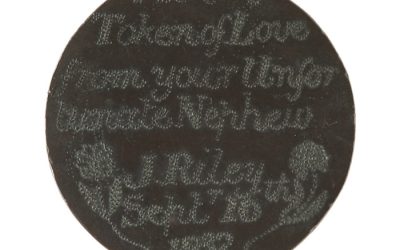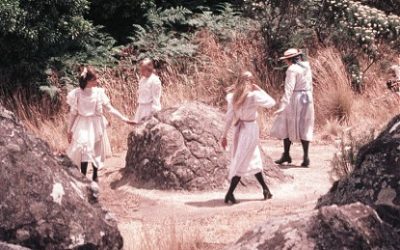Australian History
Challenging Narratives: Introducing the June 2025 JRAHS
Challenging Narratives: Introducing the June 2025 Volume of the JRAHS The June 2025 issue of the Journal of the Royal Australian Historical Society (Vol. 111, Part I) explores new perspectives on colonial authority, identity, and Australia's contested past. As Editor Dr Samuel White outlines in his foreword, this issue reflects the Journal’s original intent: to challenge dominant narratives and recover overlooked voices from across Australia’s history. Dr Keith Amos revisits the 1790 spearing...
The Recruiting Officer: Australia’s First Recorded Play
The Recruiting Officer: Australia’s First Recorded Play Written by Rebecca Vipond, RAHS Volunteer When you hear the word ‘convict’, what comes to mind? Chain gangs? Cat o’ nine tails? How about theatre and play acting? On 4 June 1789, the birthday of King George III, a group of convicts performed Australia’s first recorded play at Sydney Cove. (1) The play was The Recruiting Officer by Irish playwright George Farquhar. It is not surprising that a play was performed by the colonists. In the...
Australian Quaker Narrative Embroidery Project
Australian Quaker Narrative Embroidery Project The Australian Quaker Narrative Embroidery Project is a collection of embroidered panels designed to tell the story of The Religious Society of Friends (Quakers) in Australia, through stitch. The panels depict the history of Quakers in Australia from Sydney Parkinson on the ship Endeavour in 1770 to the present. The panels have been designed and stitched by different groups and individuals from Quaker Meetings around Australia, with some...
Good Servants and Valuable Wives: 190 years since the arrival of the Red Rover in 1832
Written by Patrick Bourke, RAHS Member On 10 August 1832 the Red Rover arrived in Sydney Harbour with 202 free young unmarried Irish women onboard. This ship had left Cork, Ireland, on 10 April 1832. On 15 August the young women left the Red Rover and were housed in the Sydney lumber yard, which was at the southern corner of George and Bridge streets, until they could find employment. There is now a Royal Australian Historical Society green plaque on the wall of the entrance alcove of Moran...
Changing times: 50 years of daylight saving
Written by Elizabeth Heffernan, RAHS Intern Daylight saving is an accepted, if confusing, part of life for most Australians. On the first Sunday in October, people living in New South Wales, Victoria, South Australia, Tasmania, and the Australian Capital Territory set their clocks forward by one hour to extend daylight hours after the working day. On the first Sunday in April, we set them back. The practice is a controversial one, neatly illustrated by the five time zones daylight saving...
Exciting New World: Australia in the 1920s
Written by Elizabeth Heffernan, RAHS Volunteer On Saturday 6 November 2021, the RAHS held a special online event, exploring the Exciting New World: Australia in the 1920s and 1930s. This is the first in a series of two blog posts about the interwar decades, providing an overview of the broad spectrum of changes that occurred across Australian politics, society, and culture during that time. Read the second instalment here ‘… the power of the modern … simultaneously exhilarated and alarmed the...
Ninnis, Mertz, and Mawson
Written by Elizabeth Heffernan, RAHS Intern 110 years ago in 1911, the Australasian Antarctic Expedition (AAE) set sail from Hobart, Tasmania, on the old whaling ship Aurora. Among the crew were a young Frank Hurley, soon-to-be war photographer; Frank Wild, English explorer and Antarctic veteran; Belgrave Ninnis, son of the Arctic explorer of the same name and lieutenant with the Royal Fusiliers; Xavier Mertz, Swiss champion skier; and Douglas Mawson, Australian geologist and leader of the...
Women’s Protests: Then and Now
By Elizabeth Heffernan, RAHS Intern On Monday 15 March 2021, thousands of protestors attended more than forty ‘March 4 Justice’ events across the country. From Melbourne to Mullumbimby, participants rallied against the virulent culture of gendered violence, harassment, and discrimination that plagues even the highest offices of federal parliament. They wore black and carried placards denouncing misogyny, domestic violence, rape culture, and sexual abuse in the workplace. Their rallying cry was...
Exciting New World: Australia in the 1930s
Written by Elizabeth Heffernan, RAHS Volunteer On Saturday 6 November 2021, the RAHS held a special online event, exploring the Exciting New World: Australia in the 1920s and 1930s. This is the second in a series of two blog posts about the interwar decades, providing an overview of the broad spectrum of changes that occurred across Australian politics, society, and culture during that time. Read the first instalment here If the 1920s was a decade defined by change, the 1930s was one of...
Outside Off – My Brother Jack
Written by Maximilian Reid, RAHS Volunteer‘ ‘Our Don Bradman’ Australian stories flow with cricket. Perhaps none more so than Donald Bradman, whose bronze statues, street names and ubiquitous average of 99.94 are full throated in their praise. This edition of Outside Off is not. In keeping with past editions, we seek to illustrate Australian society through cricket afforded by cricket’s unique moral dimensions. One of the most complex moral dimensions of cricket and one mirrored in today’s is...
‘This is the ABC’
Written by RAHS volunteer Elizabeth Heffernan On Friday, 1 July 1932, after the 8pm bells of Sydney’s General Post Office, Conrad Charlton announced to the country: “This is the Australian Broadcasting Commission.” [1] It was the ABC’s first wireless radio broadcast after the Australian Broadcasting Commission Act 1932 was passed on 17 May. The transmission is estimated to have reached 6% of the country’s population at the time—almost 400 000 people from as far away as Perth. [2] The leaders...
Convict Love Tokens
Written by RAHS Volunteer and Copywriter, Christina King This blog post is part of a series entitled ‘The Convict Experience: Love, Life and Liberty Beyond the Chains’. Each month we will explore a different – and often rather unusual – type of primary evidence historians can use to hear convict voices telling their own stories. Movingly known as ‘leaden hearts’[1] and ‘likened to portable graffiti’[2], convict love tokens have been described as ‘a unique chance to see the convicts as they saw...
Valentine’s Day 1900
Written by Elizabeth Heffernan, RAHS Volunteer On Valentine’s Day in 1900, two schoolgirls and their maths teacher went missing from a picnic at Hanging Rock and were never seen again – or so author Joan Lindsay led her readers to believe in the classic Australian novel Picnic at Hanging Rock, first published in 1967. A short note from the author prefaces the story: “Whether Picnic at Hanging Rock is fact or fiction, my readers must decide for themselves. As the fateful picnic took place in...

